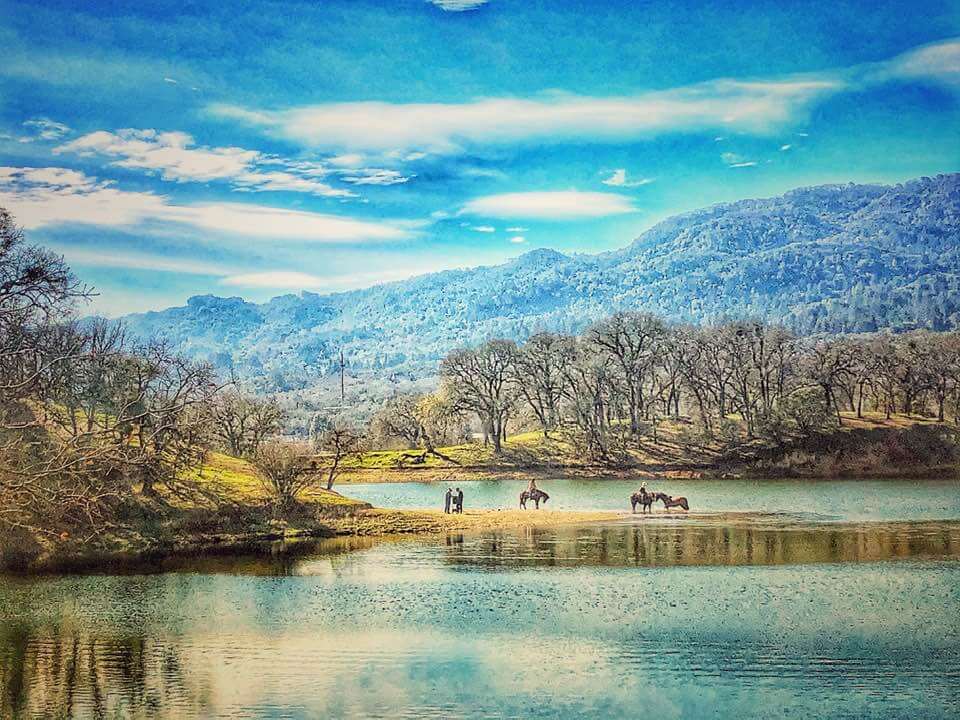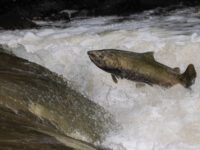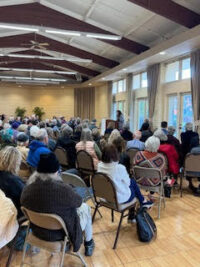
The wildlands of the Sonoma Developmental Center are public now. Do they have to be privatized to become public again?
By Tracy Salcedo
From day one, my community activism has focused on preservation of the open space at Sonoma Developmental Center (SDC). Of all the worthy transformations contemplated for the storied property, ensuring the wildlands remain forever wild has been my highest priority.
From day one, I’ve heard promises from elected officials at the county and state levels, along with planners, consultants, and bureaucrats, that preserving the open space was a done deal.
From day one, I’ve asked: If that’s the case, why do we have to wait? Why don’t we set it aside now?
Don’t worry, the officials have responded. There’s a process. Have faith.
I’m worried. In its recently released request for proposals (RFP), the California Department of General Services (DGS) has put the SDC’s 180-acre core campus up for sale. The surrounding 750 acres of wildlands are not included in the “subject property” description that prospective buyers will bid on. While it’s reassuring the open space is not currently on the market, the RFP doesn’t clearly elucidate the DGS’s intentions for disposition of the wildlands.
I’m worried.
What’s the plan?
The timelines for Sonoma County’s specific planning process and the state’s disposition process have always overlapped, but the original idea was that by the time the property was put up for sale, the specific plan would be done, the open space boundaries would be delineated, and a means of transfer to state parks, regional parks, or a land trust would be in place.
Enter wildfire, pandemic, inflexibility, and bureaucracy. Now, if the state sticks to its timeline, it will sell the campus before the Board of Supervisors adopts the beleaguered specific plan. If a sale goes forward, the buyer will own the campus, but future of the wetlands, woodlands, grasslands, trails, and much of the Sonoma Valley Wildlife Corridor remains unclear. The RFP refers potential buyers to the “project description” in the county’s notice of preparation (NOP) for the required environmental impact report, stating:
“… The Project will also include policies to govern the retention and preservation of the open space surrounding the 180-acre core campus, which encompasses the vast majority of the SDC Property (approximately 765 acres) and includes two lakes, the Eldridge Cemetery, and Camp Via. Policies will address the use of infrastructure within the open space such as the existing water system infrastructure.”
But the RFP goes into no further detail. Who will own the open space? What uses will be allowed? What’s the mechanism for transfer to an entity with parks management expertise, which is sorely needed on the SDC’s open space? While I have no doubt the electeds and bureaucrats will reiterate their assurances that the 750-plus acres surrounding the core campus will remain in the public trust, I’d love to see a plan.
The “plan” has changed
For the six years I’ve been immersed in the transformation of the SDC as a community advocate, state and county officials have asserted that the state would not entertain separating the open space from the core campus in its disposition process. The property would be sold as a whole. All requests to transfer the wildlands to either state or regional parks, separate from sale of the campus, have been rebuffed.
The RFP demonstrates that position has changed.
But the reasons for the change are not clear. The main argument used by elected officials, bureaucrats, and planners in favor of selling the property in its entirety was that the purchaser would a tax break when they donated the open space back into the public trust. Is that no longer valid? Bureaucratic justifications were also in play. The DGS does real estate. The simplest, easiest real estate play is to sell a property “as is,” and in its entirety. Breaking it into pieces complicates things, as does correcting deferred maintenance, performing hazard remediation, and replacing failing infrastructure. Are those concerns no longer in play?
Sonoma County’s planners and politicians have, thus far, shown no interest in pursuing creative solutions to any SDC conundrum, much less championing the property’s open space. They’ve stood by specific plan alternatives that lack specifics. They say don’t worry about the open space and I guess I shouldn’t, because they’ve presented nothing specific to worry about.
Do it now
I think you know where I’m going with this. Can we set aside the open space now? I don’t see why not. No law says we can’t. It’s just a matter of pressing the right political buttons.
First, let’s talk dollars. The state is flush with cash. Using funds from the budget surplus to pay for survey and transfer of the open space to state parks or a conservancy, even as an interim solution, should not be a hard lift. The argument that legislators won’t authorize spending more on the process because establishing a park at SDC holds no value for people living elsewhere in the state is bogus. Just because a Californian may never visit Anza-Borrego State Park or explore the Lost Coast doesn’t mean those places have no value. Knowing the parks are there, doing the good things parks do, is enough.
Moreover, practically speaking, parks bolster local economies. They bring people in, and those people, in turn, bring in dollars.
Next, let’s talk equity. Cultural inequities plague housing markets and job markets, but not parkland. No matter your race, ethnicity, socioeconomic status, belief system, the language you speak, or the ableness of your body or mind, you have equal rights and equal ownership in public open space. It belongs to everyone.
Let’s talk climate change. The state’s 30×30 initiative, with the goal of conserving 30% of California’s land and coastal waters by 2030, seeks to mitigate its effects. Every acre counts, and those at the SDC are stellar additions.
Why are they stellar? Let’s talk the wildlife corridor. With plant and animal species facing isolation and possible extinction due to habitat loss, the drive to preserve corridors like the one running through the SDC has gained statewide and national momentum.
Let’s talk public safety and liability. With the open space in the hands of capable land managers, trail maintenance, signage, patrolling, and educational programs can be implemented to help keep users safe. Parks are protected from liability too. Trust me: I know. I wrote Death in Mount Rainier National Park. Hundreds of people have died there but no one’s successfully sued the park.
Let’s talk benefits for the electeds and the bureaucrats. If promises are kept, the optics are grand.
Let’s talk the good of the community, no matter how it’s defined. Once the wildlands are formally wildlands, we can move forward on all the other good ideas for the property.
Something worthy; something true
From day one, my advocacy for the SDC has been aspirational. I’ve also been steeped in the process long enough to know aspirations are worthless if they aren’t practical and compelling.
I’ve addressed the practicalities above, and part of me says that should be motivation enough. But over the years I’ve harbored a shared hope that something profound could be created at the SDC, something worthy, something true. I’m not alone in this.
The places we hold in the public trust preserve beautiful landscapes, mountain heights, ocean depths, fantastic wildlife. They also preserve human stories — stories of people who went to war, people who were slaves, people unjustly interred, tribal peoples, suffragists, immigrants, prisoners, captains of industry, naturalists, presidents, and more.
People living with disabilities — physical, emotional, developmental — were part of all these human communities. But no park — not one — puts them front and center. No park is dedicated to their story.
We can create that park here, on the slopes of Sonoma Mountain. Along with its wooded hollows and wildflower meadows, we can preserve the compelling stories of the mountain’s volcanic origins, of its first people, and of its long history as a place where people who were marginalized for being different lived and died.
We can do that here. First. Forever. Now.
Tracy Salcedo is an award-winning writer and editor based in Glen Ellen. This story first appeared in the June 1, 2022, edition of the Kenwood Press.
Photos of the SDC’s Lake Suttonfield by Diane Askew








Be First to Comment